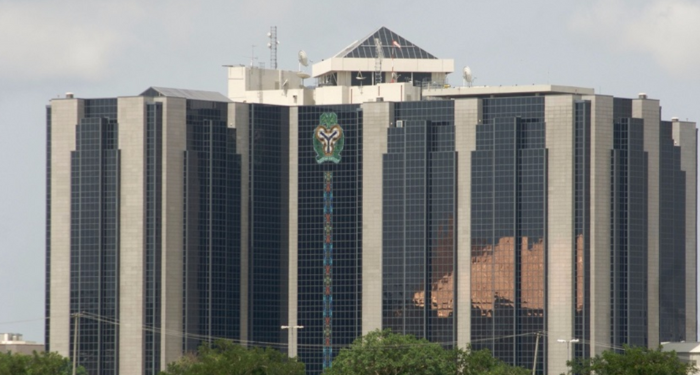The Central Bank of Nigeria (CBN) has ramped up its market operations in 2025, executing N17.59 trillion in primary market (PM) debt issuances and settling N14.72 trillion in repayments between January 2 and November 21.
This translates into a net liquidity absorption of N2.87 trillion, reflecting sustained monetary tightening and a marked shift toward structured deficit financing through market-driven instruments.
The figures, sourced from official transaction data reviewed by Nairametrics, point to a more coordinated effort between the CBN and the Ministry of Finance to manage liquidity, contain inflation, and reduce reliance on direct central bank funding of fiscal deficits.
Aggressive Start, Stabilising Mid-Year, Balanced End
The year began with a pronounced push toward liquidity absorption. In January, the CBN issued N1.87 trillion in domestic debt instruments against N595.78 billion in maturities.
- February and March maintained this aggressive stance, recording issuances of N3.26 trillion and N3.12 trillion, respectively.
- Notably, March’s N4.08 trillion in repayments marked the highest of the year, tied to maturing instruments from late 2024.
- By the second quarter, issuance momentum slowed. In April and May, the CBN raised N1.54 trillion and N1.51 trillion, while repayments stood at N665.02 billion and N1.29 trillion, respectively.
- The slowdown continued into June, where just N712.02 billion was issued, despite N954 billion in redemptions, reflecting rollover pressures.
Stabilisation occurred in the second half of the year. Issuance volumes from July to October hovered between N677.75 billion and N1.85 trillion, while repayments remained strong, peaking again in October at N1.15 trillion.
From November 1 to 21, a near parity between N1.64 trillion in issuance and N1.61 trillion in repayments suggested a calibrated liquidity strategy heading into year-end auctions.
Market-Driven financing marks policy maturity
According to Teslim Shitta-Bey, Chief Economist at Proshare, the 2025 financing trajectory marks a critical departure from past practices of excessive CBN Ways and Means financing.
“In the past, deficit financing relied heavily on central bank overdrafts—effectively printing money,” Shitta-Bey noted. “This approach fuelled inflation, which peaked at 38% before retreating.”
The move toward market-based debt issuance, he said, is a healthier strategy. “Instead of injecting liquidity via direct deficit financing, government now absorbs excess liquidity from institutional investors by offering attractive yields.”
This shift, he added, aligns with global best practices, though it may raise the cost of capital and crowd out private sector borrowing.
Still, investor appetite appears robust. Shitta-Bey referenced Nigeria’s Eurobond issuance, which was oversubscribed by 300%, as a sign of resurgent investor confidence despite domestic and geopolitical risks.
Debt Sustainability now a core concern
Despite improved fiscal discipline, analysts have raised red flags over sustainability. With N17.6 trillion already raised against a budgeted N13 trillion for 2025, debt accumulation is outpacing fiscal projections.
- Shitta-Bey cautioned against the use of borrowed funds for recurrent spending, urging a pivot toward an asset-building fiscal model.
“Debt should build capacity. If we continue borrowing just to plug holes, we’re repeating past mistakes,” he said.
- Adding to the concern, capital market stakeholders at the Q4 2025 Capital Market Academics of Nigeria (CMAN) symposium warned of a return to pre-2005 debt vulnerabilities.
Prof. Wilfred Iyiegbunwe compared the current trajectory to the period that necessitated the Paris Club debt forgiveness, urging a return to evidence-based debt management and strict enforcement of Nigeria’s Medium-Term Debt Strategy (MTDS).
Recommendations from the forum include reducing reliance on short-term debt, cutting exposure to volatile external funding, improving project selection, and increasing transparency in contingent liabilities.
Analysts Note Improved Liquidity, Low Risk of Crowding Out
Despite high issuance levels, some experts see limited evidence of private sector crowding out. Olubunmi Ayokunle, Head of Research at Agusto & Co, noted that the narrow spread between maturities and new issuances reflects strong financial system liquidity.
“Auctions have remained oversubscribed, and net borrowings are around N3 trillion, lower than in previous high-debt cycles,” Ayokunle said.
- He expects corporate financing activity to pick up in 2026, particularly through commercial papers and bond issuances, as banks lower funding costs and macroeconomic stability improves.
He also highlighted that the Debt Management Office (DMO), not the CBN, determines the volume of borrowings, pointing to improved fiscal governance. The current gap between issuance and repayment suggests capital recycling rather than structural fiscal deficits.
Policy Outlook: Discipline Improving, But Risks Linger
Looking ahead, market participants anticipate continued use of domestic debt instruments for liquidity sterilisation and budget support, with the CBN expected to maintain a tight but flexible stance.
- Investor confidence remains intact, supported by attractive yields and cautious optimism about policy continuity into 2026.
- However, the crucial challenge remains how the funds are used. As Shitta-Bey succinctly concluded: “Borrowing isn’t dangerous—misallocating debt is. What we do with these trillions will determine whether we build resilience or risk a relapse.”
The data suggests that monetary discipline is taking root, but fiscal transformation is still a work in progress.

















